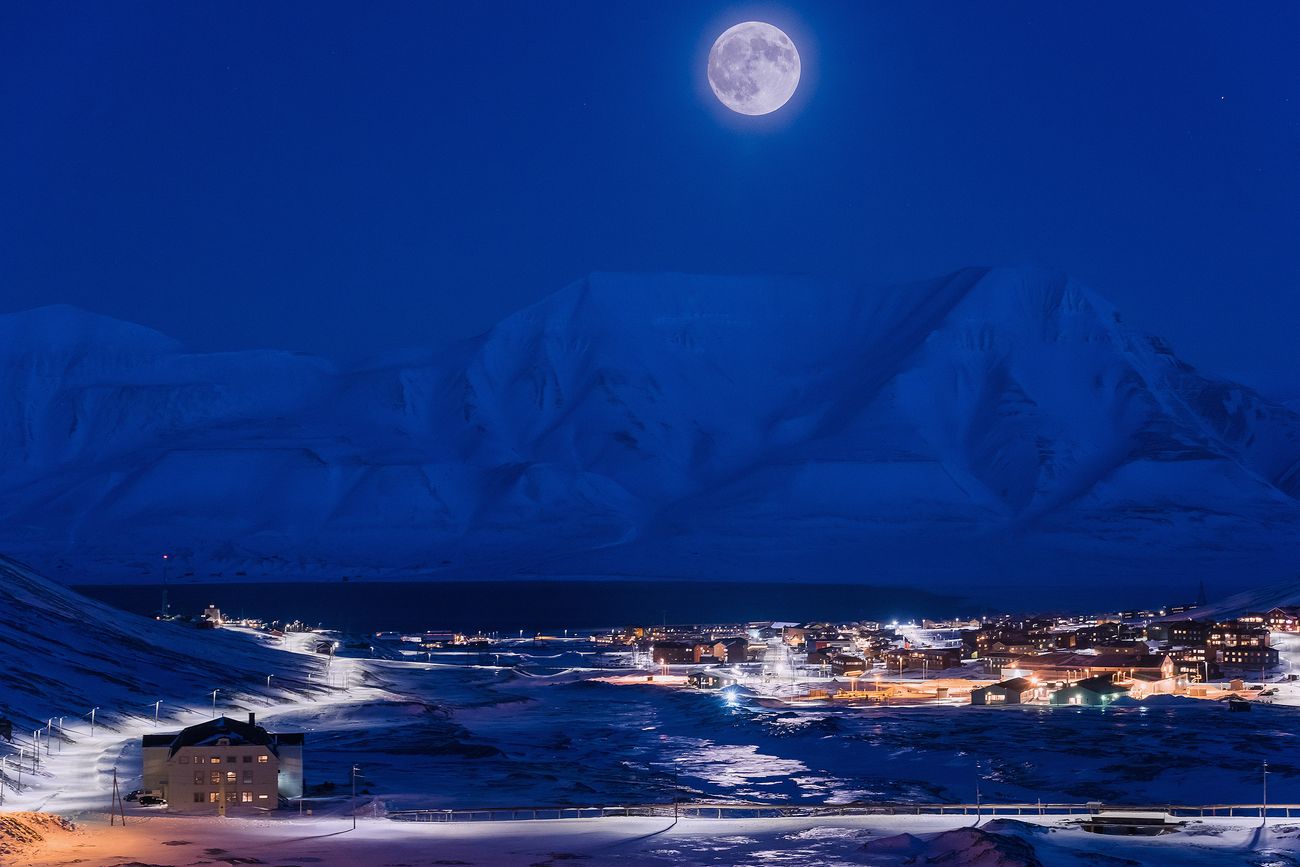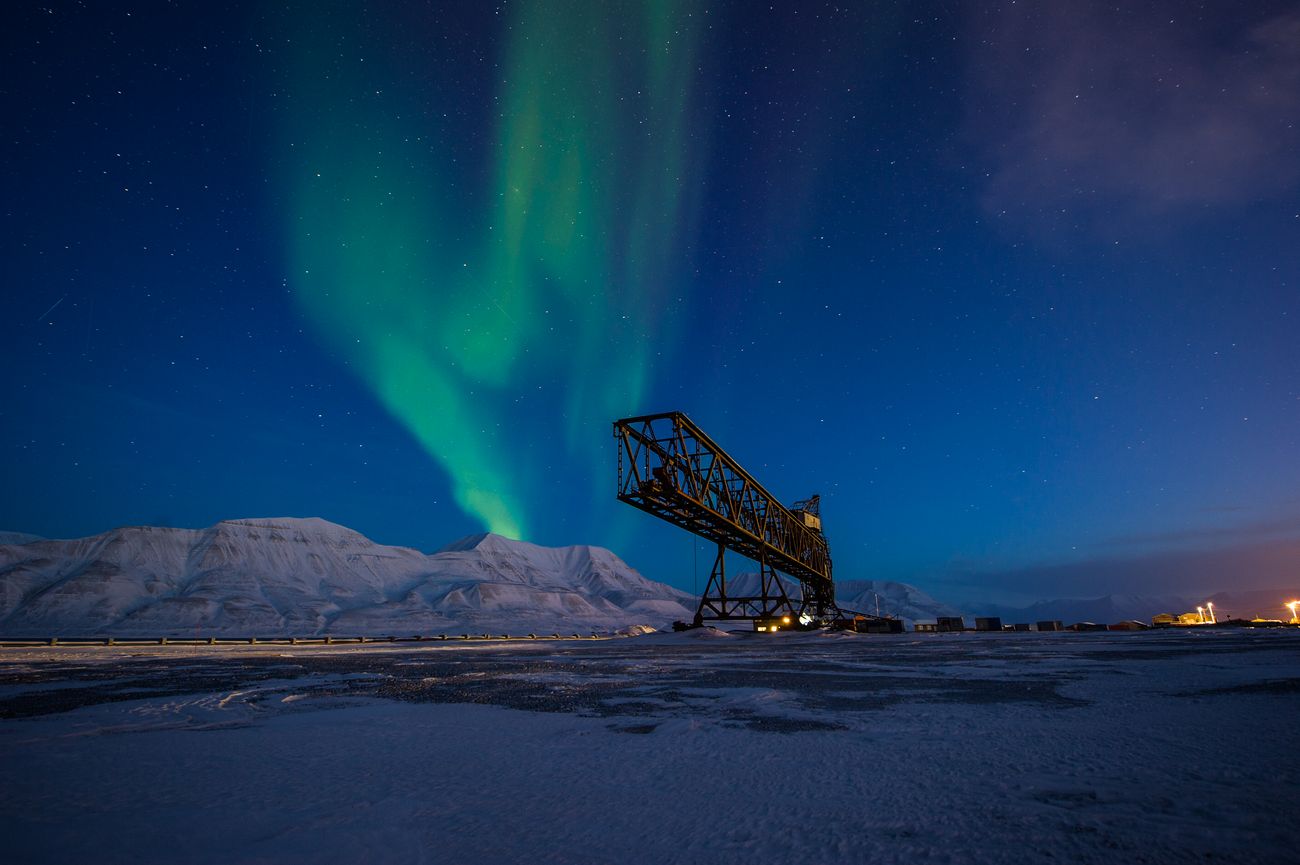
On October 27, the last sunset was seen in Longyearbyen, Norway. Residents of the 2,400-resident town will not see a sunrise for another 132 days. Longyearbyen is the world’s northernmost settlement and is located on Spitsbergen island in the Svalbard archipelago. Each year, Longyearbyen experiences a polar night, much like Utqiaġvik (also known as Barrow), Alaska, does. While the true polar night at Svalbard lasts from November 14 to January 29, Svalbard is shaded by mountains, and the sun is not visible in the village of Longyearbyen for an extended period of time on either side of the polar night. The first day the sun can be seen again in the village will be March 8, 2025.
While the world around Longyearbyen is cast in shadows and life shifts into a slower gear, residents adapt their routines to the dark conditions. Schools, workplaces, and businesses remain open, and people go about their days under artificial lights, often using lamps designed to mimic sunlight and help combat seasonal affective disorder (SAD). Local businesses sell “daylight lamps” alongside the usual winter essentials, and many families keep them on for extended hours to simulate the light.
132 days without sunshine may seem like some people’s worst nightmare, but the residents of Longyearbyen embrace what they call “the coziest time.” While naturally more time will be spent indoors during those months, it is also a special time to appreciate the stars and northern lights in the middle of the day. During the polar night, when the sun doesn’t rise past 6 degrees below the horizon and the sky is pitch black, visitors and residents use this special time to go hiking, ski touring, dog sledding, or on snowcat and snowmobile safaris under the clear, starry skies. When enough snow has fallen over the glaciers, visitors can explore the ice caves inside the glacier and appreciate true darkness inside the ice caves.

Similar to Barrow, Longyearbyen’s remote existence in this remote location is based on natural resources. American businessman and mining pioneer John Munroe Longyear established the first mine in 1906 and called the settlement Longyear City. In 1916, the Store Norske Spitsbergen Kullkompani took over the mining operations from Longyear’s Arctic Coal Company, and the settlement was renamed Longyearbyen. The town operated as a typical coal mining town until the 1990s when the economy pivoted towards tourism, science, and education. Now Longyearbyen boasts a small university with 300 students and residents of the remote town come from 53 different nations. Tourism has steadily grown since the 1990s. In 2016, Longyearbyen welcomed 115,000 tourists—35,000 of whom arrived by cruise ship from overseas. Adventurers and sightseers come to experience the Arctic’s extremes, from polar bears and glaciers to the surreal experience of the polar night. Tourism infrastructure has flourished, with hotels, restaurants, and guiding companies adding both livelihood and a cosmopolitan vibrancy to Longyearbyen.

Beyond tourism, Longyearbyen has emerged as a center for Arctic research and education. The University Centre in Svalbard (UNIS) has established itself as a leading institution, drawing students from around the globe to study biology, geology, geophysics, and technology in one of Earth’s most extreme environments. Researchers here confront climate change head-on, studying its impacts on Arctic ecosystems and the frozen landscape that surrounds the town. While many residents come to stay for just one year, a surprisingly large number wind up staying for longer. The average time people live in Svalbard is seven years.
Longyearbyen has evolved to meet the needs of its modern community, building up essential services that have transformed it into more than a temporary settlement. A hospital, school, kindergartens, a sports hall, church, and cultural center support residents who now call Longyearbyen home year-round. It’s a town learning to adapt, blending a rich mining heritage with a growing, dynamic society built on exploration and discovery in one of the world’s northernmost inhabited regions.
In Longyearbyen, the sun’s return on March 8 is celebrated with the “Solfest,” where families gather to welcome the first slivers of sunlight creeping over the mountains. Residents watch the sunrise together, celebrating the light’s return as a symbol of resilience and new beginnings. The dark season has its beauty, but the sun’s reappearance is a reminder of balance and hope.